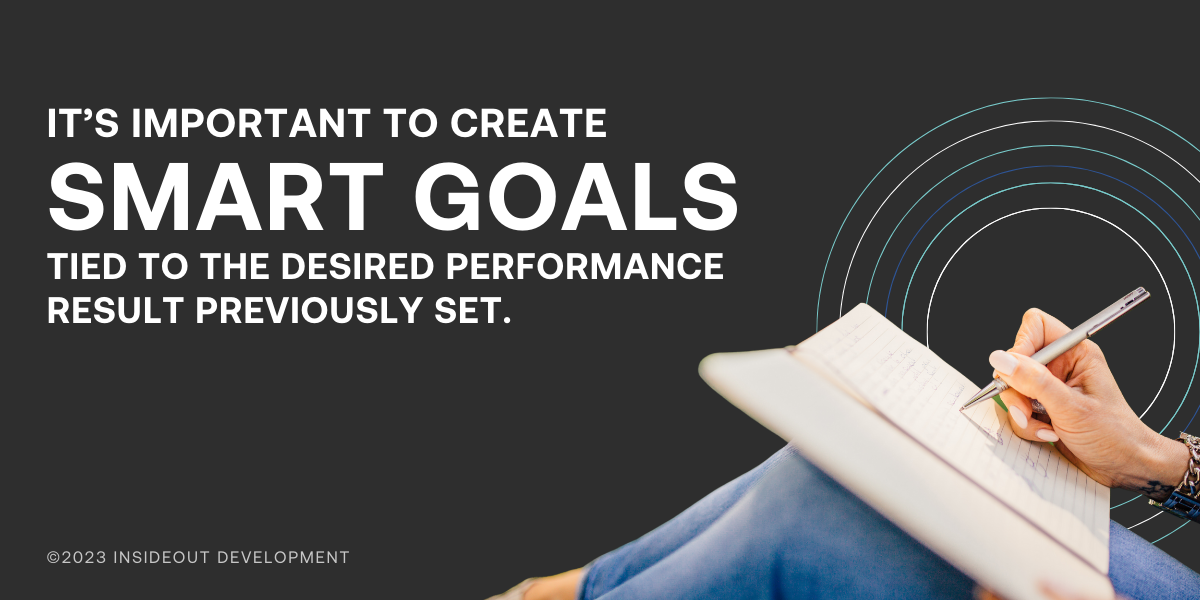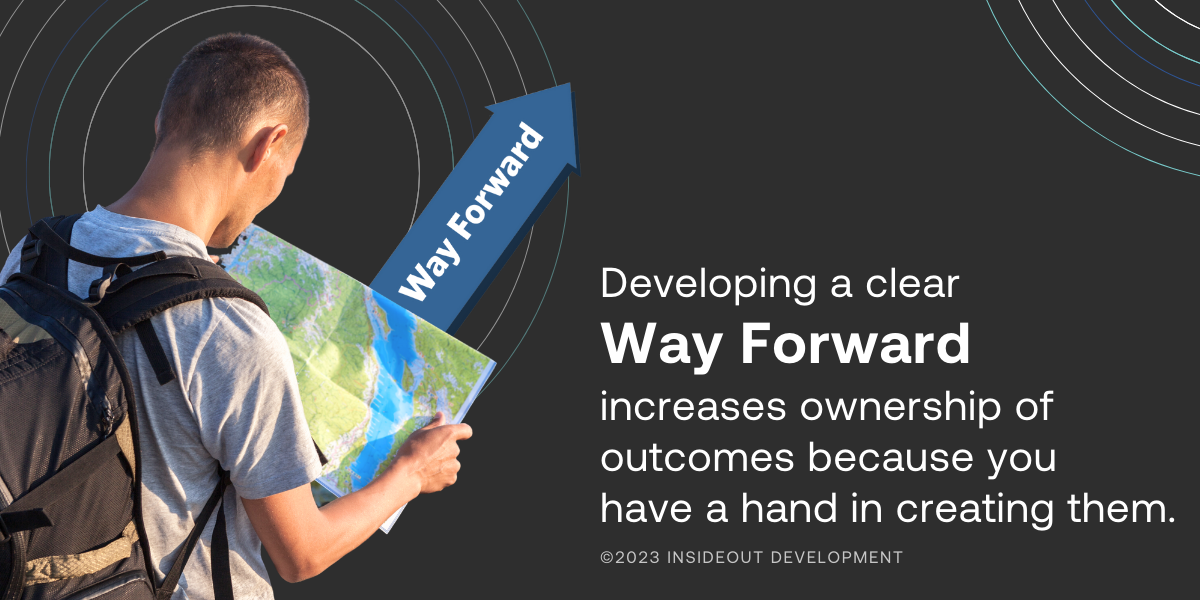
Thinking, planning, and problem-solving aren’t helpful unless you leave with an actionable next step. Leaving a planning meeting with a clear Way Forward is essential, or you haven’t fully solved the problem.
Learn how to assess and select a solution for success so you can forge a path forward toward achieving your goals.
Understanding the Way Forward in the Context of GROW
The fourth component of the GROW Model — the “W” — stands for Way Forward, which is the last element of any decision-making process.
Once you've set a Goal, clarified your Reality, and brainstormed Options, you need to choose a specific and clear solution as your Way Forward. Doing so helps you get granular on your next steps, which are the details of your new performance goal. After all, a Way Forward should eliminate ambiguity and drive action, not just planning.
Developing a clear Way Forward increases ownership of outcomes because the performer (you) has a hand in creating them. They have more Fire around the action because they have more ownership of it. They are committed to the action because they are committed to the end result.
The Importance of a SMART Way Forward
One of the most popular acronyms in the realm of goal setting is SMART. Goals should be SMART — or specific, measurable, achievable, realistic, and time-bound.
Using the GROW Model, performers and leaders focus on specificity and achievability when setting an initial performance goal. As you plan a Way Forward, you’ll get even more specific by creating a detailed action plan. You’ll narrow all your Options down to the one or two you will take immediate action on.
It’s important to apply the concept of SMART here and create a next step that has a clear (specific) metric (measureable) and due date (time-bound). This step should be something reasonable to accomplish (achievable and realistic) and tied to the performance result.

While most goal-setting research argues for setting difficult “stretch goals,” studies have shown that this holds true only when the performer feels confident in their ability to achieve the task.
By setting a simple next step — or Way Forward — the Goal is broken down into smaller task-based objectives. This instills confidence in the performer that they can complete these smaller tasks, relieves anxiety, and opens them up to discover systematic strategies to achieve their larger performance goal.
You’ve Found a Way Forward… What’s Next?
After you’ve developed a Way Forward action plan, determine a follow-up plan that includes consistent check-ins and feedback. This ensures that the performer is on their way to achieving their initial goal, and the leader is fostering a coaching culture that drives results and grows people.
Interested in making continuous coaching a part of your workplace culture? Our team of coaching professionals can help. Reach out now.






